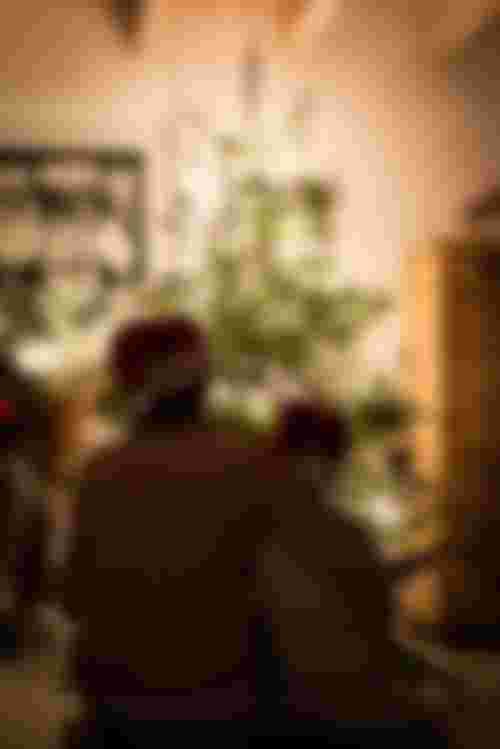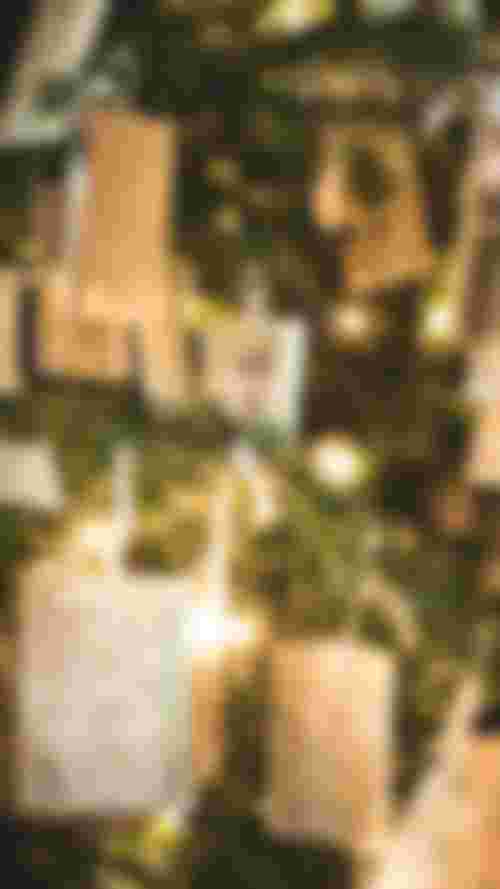24 Interesting Facts and Information About Christmas for Kids
There’s something special about Christmas and kids look forward to this festival the most. And why shouldn’t they? After all, they get gifts from Santa Claus. But there’s more to Christmas than gifts and decorating the house. Your kids will have Christmas holidays and will most likely spend their time playing. How about this time you share with them some amazing facts about Christmas? Read these Christmas facts to your kids and help them learn about this festival. They can share this amazing information about Christmas with their friends too!

Amazing Christmas Facts for Children;
Tell these jolly good Christmas facts to your kids. We are sure your children will love to know the history of everything that makes Christmas so special.
1. Christmas celebrates the birth of Jesus Christ.
Christmas is an annual Christian holiday that celebrates the birth of Jesus Christ. The 25th day of December was chosen to mark His birthday by the Roman Catholic Church years after His death. And this Christian holiday is celebrated by Christians all over the world.
2. Christmas trees were first used by ancient Egyptians and Romans.
The origin or the use of Christmas trees goes way back to ancient Egyptians and Romans. They used evergreen trees like fir or pine trees, wreaths, and garlands. And the use of modern Christmas trees started in Germany in the 16th century. Instead of the glitzy decorations that we see on them today, they were decorated with fruits and nuts. Wet bet you didn’t know this interesting fact about the Christmas tree!

3. The term ‘Xmas’ simply means Christmas.
The use of the term ‘Xmas’ dates back to the 16th century. The ‘X’ in the word Xmas comes from the ancient Greek language. In Greek, Christ begins with the letter X. So, Xmas simply means Christmas.
4. Santa Claus was known as Sinterklaas in Dutch.
For children, Christmas is all about receiving gifts from Santa Claus. But how did Santa Claus come into existence? The character of Santa Claus is based on St. Nicholas. As per a legend, St. Nicholas was a Christian bishop who provided for the poor and needy. He also loved children and enjoyed giving gifts to them secretly. As his story spread, he was called Sinterklaas in Dutch, which later became Santa Claus. We bet you didn’t know this fact either!
5. Santa Claus did not always dress up in red clothes.
Santa Claus initially wore clothes that were in green, purple, or blue. For many years, this was the common theme for the jolly old man at the North Pole. However, Coca Cola decided to dress him up in colours that matched their brand, and that stuck. So this is why he is always in red clothes now!

6. Rudolph, the ‘Red-Nosed Reindeer’ has helpers too!
So you and your kids probably know Rudolph, the red-nosed reindeer, who pulls Santa’s sledge on Christmas Eve. But do you know other reindeers? It would be impossible for Rudolph alone to pull Santa’s sledge, don’t you think? It is filled with gifts to the brim for every good child in the world, and Rudolph can’t pull that all alone. Rudolph, the red-nosed reindeer, is, in fact, Santa’s ninth reindeer. And there are eight other reindeers who help him. These eight reindeers are Cupid, Dancer, Vixen, Dunder, Comet, Dasher, Prancer, and Blixem.
7. Baby Jesus received some wonderful gifts when he was born.
When Jesus was born, a bright star shone in the sky. Three kings followed this star and made a long journey to the birthplace of Jesus. They bore with them gifts of gold, frankincense (aromatic resin used in incense and perfumes), and oils.

8. The Christmas wreath is a symbol of love and eternal life.
The Christmas wreath is representative of the crown of thorns that Jesus wore. Eventually, the colours of Christmas – red, green, and gold were added. Red is said to represent the blood of Jesus, green is supposed to symbolise life, and gold stands for royalty and light. And the evergreen foliage used to make Christmas wreaths symbolises the continuity of life and nature even in the darkest days of winters.

9. Carolling is based on the tradition of wassailing.
Have you ever wondered why people go door to door singing carols? The tradition is based on the English custom of wassailing, which was a tradition to toast to someone’s good health and fortune. St. Francis of Assisi took this tradition and converted it to the modern form of carolling.
10. Santa Claus gets gifts too!
Santa comes bearing gifts for the children who have been good throughout the year. But do you know that Santa gets gifts too? Who gives presents to Santa? It’s us! Yes, even you can give gifts to Santa! And no, the jolly old man does not want traditional gifts, but he is a bit partial to cookies and milk to keep him satisfied during his trip around the world. So this Christmas, ask your children to help you while you make cookies for them and for Santa. Santa will love eating cookies made with love!
11. Christmas cakes are not really plum cakes.
One of the best parts about Christmas is the Christmas cake, and we all love eating it. But does your child know what cakes are consumed during Christmas? It’s plum cake! The cakes we get to eat during the Christmas holidays are known as plum cakes, but there are, in fact, no plums in the cake! Raisins were known as plums in medieval times, and the ingredients were stirred in an East to West direction similar to that of the journey of the three wise men.

12. Santa gets a lot of work done with the help of elves!
One of the reasons Santa can make his marathon runs through the day and give gifts to the kids all over the world is due to the help of elves. The merry spirit of Christmas is because of these cheerful workers and their commitment to the kids of the world.
13. The mistletoe is the symbol of love and laughter!
A mistletoe is supposed to be a symbol of love, laughter, and compassion. And the tradition of a kiss under the mistletoe is supposed to be a way of asking for the blessings of the spirits of Christmas through the mistletoe.
14. Christmas stockings are cute, warm, and spacious!
The tradition of nailing Christmas stockings near a fireplace came about in order to help Santa have a place to stuff candies and goodies for bright and cheerful children of the world. It also serves as an endless supply of socks for Santa.
15. Wearing cute and stylish Christmas sweaters is now a competition!
No Christmas is complete if you and your kids don’t wear adorable Christmas sweaters. But did you know that a large part of the world has contests like the ‘best Christmas sweater competition’? When kids wear cute Christmas sweaters, they look adorable and they make beautiful memories to cherish forever.

16. Lumps of coal are gifts too!
Did you know that Santa does not simply ignore the children who have been bad throughout the year? He puts pieces of coal into the child’s stocking instead of gifts! This tradition started in Italy. Yet another important reason for children to be good through the year and do as many good deeds as they can!
17. People give Christmas cards to convey their feelings to their loved ones.
One of the most fun rituals of Christmas is the exchange of Christmas cards. You can ask your child to make your own cards with embellishments of his choice. By giving Christmas cards, they can convey their feelings to the person they like and wish them well.
18. Alabama was the first state in the US to have recognised Christmas as an official holiday!
Yes, you read that right! Alabama was the first state in the US to recognize Christmas as a holiday in the year 1836. We bet you didn’t know this – but you know it now and so will your kids! Your kids will be curious to know about the last state too, so feed their curiosity. It’s Oklahoma! Oklahoma recognized Christmas as a holiday in the year 1907.
19. There’s a story behind the ’12 days of Christmas’.
Did you or your kids ever wonder why the holidays of Christmas are referred to as the ‘12 days of Christmas’? Legend has it that the three kings took twelve days to travel to the birthplace of baby Jesus, hence the holidays of Christmas are known as 12 days of Christmas.

20. The biggest Christmas gift was the gift of friendship to the US from the people of France!
Christmas is also the time of exchanging gifts. People either save up through the year to buy gifts for their friends and family or make the gifts themselves. But do you know which is the largest Christmas present ever given? It is the Statue of Liberty! The Statue of Liberty was gifted by France to the USA as a Christmas gift in the year 1886.
21. The traditional Christmas meal is not what you think it is!
The traditional Christmas meal in England before turkey became the obvious choice of food for the holidays was a pig’s head covered with mustard.
22. There’s a certain respect for spider webs in Poland!
Did you know that spider webs or spiders are considered signs of good spirit during Christmas? Yes, in Poland, people believe that a spider wove a blanket for the baby Jesus. Since then, people believe in good luck and good spirit whenever they see a spider in their houses. How amazing that is!
23. A feast for Santa Claus’s Reindeer!
On the night of Christmas, many kids leave presents in stockings for Santa Claus. However, many families in European countries like the Netherlands and Germany follow old traditions. The children leave their shoes out the front door filled with hay and carrot for reindeer to eat. If children remain good and not naughty, then St. Nicholas leaves them savouries like candies and apples.
24. An idea that took off!
Christmas crackers were first started by Tom Smith in London after he visited France and loved their almonds wrapped in beautiful paper – ‘bon bon’. He tried to replicate this in England by adding sweets, pretty quotes. But, the plan didn’t work out. Then, he came up with the idea of pulling apart crackers and having toys and savouries come out. This idea took off, and since then, it has been a popular Christmas celebration item used in every household and Christmas party.
There are many traditions and customs your kids can partake in at the happiest time of the year. Remember to involve them in as many rituals as you can, be it decorating the tree and house or making plum cakes. The festivities begin at home and will be treasured by your children for years to come








Good luck